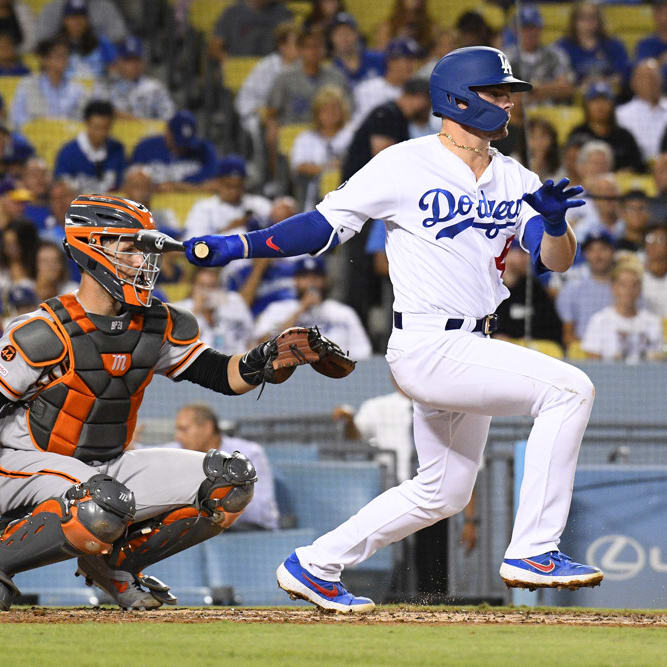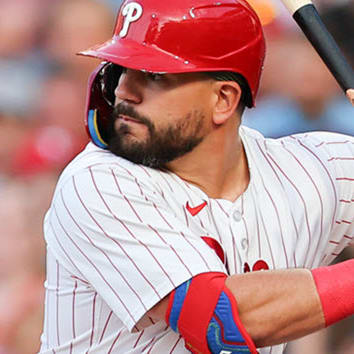This article is part of our Collette Calls series.
All dollar values referenced are 15-team mixed league standard format from our Earned Auction Value Calculator.
Welcome to the eighth edition of my annual contribution to the RotoWire draft content. Normally, this article is written with a specific word count in mind to stay within the constraints of the magazine, which would be hitting the shelves in early January. This year, this article will only live online, so the shackles are removed and I can really have some fun with this article, which I always consider my way of kicking off the new season of fantasy research. While research never truly ends, I do take a bit of a hiatus from writing in November and early December to focus on the player capsules, and that was again the case the last few weeks.
I am proud of the track record of this particular piece because it has certainly helped give readers an early hint at players who did have strong bounceback or breakout seasons on the heels of disappointing seasons. Three seasons ago, Yandy Diaz, Lance Lynn, Jeff Samardzija and Jake Odorizzi were suggested as targets. In the short season of 2020, Brandon Nimmo, Corbin Burnes, Kyle Tucker and JaCoby Jones were discussed as targets even though the piece itself was penned in early December 2019. Last year's installment suggested Luis Urias ($14), C.J. Cron ($19), Anthony DeSclafani ($15), Jonathan India ($19) and Tyler O'Neill ($27). Each of those players went in the 20th round or
All dollar values referenced are 15-team mixed league standard format from our Earned Auction Value Calculator.
Welcome to the eighth edition of my annual contribution to the RotoWire draft content. Normally, this article is written with a specific word count in mind to stay within the constraints of the magazine, which would be hitting the shelves in early January. This year, this article will only live online, so the shackles are removed and I can really have some fun with this article, which I always consider my way of kicking off the new season of fantasy research. While research never truly ends, I do take a bit of a hiatus from writing in November and early December to focus on the player capsules, and that was again the case the last few weeks.
I am proud of the track record of this particular piece because it has certainly helped give readers an early hint at players who did have strong bounceback or breakout seasons on the heels of disappointing seasons. Three seasons ago, Yandy Diaz, Lance Lynn, Jeff Samardzija and Jake Odorizzi were suggested as targets. In the short season of 2020, Brandon Nimmo, Corbin Burnes, Kyle Tucker and JaCoby Jones were discussed as targets even though the piece itself was penned in early December 2019. Last year's installment suggested Luis Urias ($14), C.J. Cron ($19), Anthony DeSclafani ($15), Jonathan India ($19) and Tyler O'Neill ($27). Each of those players went in the 20th round or later in the industry mock draft, which was published in the draft magazine last year, for a variety of reasons, from high-risk profiles to previous poor returns on investments.
These types of players are in every single draft and they live amongst every player pool heading into a draft. These are also the types of players, which more often than not, you can find on the rosters of the folks winning your league because of the massive return on investment provided from such end-game picks. They lurk in groups of players rebounding from poor seasons caused by injury, players roadblocked on the depth chart or a confluence of factors contributing to a questionable draft profile. These conditions often suppress a player's reputation during a draft season, presenting a buying opportunity, depending on your comfort with the risk and reward.
Let's begin with players coming off bad seasons, regardless of reason. To qualify for this pool, players must have returned less than $5 of fantasy value in 2021 after an ADP in the top 300, but now find their 2022 ADP lower than their final 2021 ADP. The purpose is to find players who were very front of mind last draft season whose perceived market value may be slipping with recency bias in play.
PLAYER | 2021 ADP | 2021 R$ | 2022 ADP |
|---|---|---|---|
44 | $2 | 130 | |
105 | $0 | 275 | |
154 | $3 | 262 | |
159 | $2 | 273 | |
168 | -$4 | 412 | |
190 | -$2 | 231 | |
240 | $4 | 286 | |
290 | $3 | 488 |
Blake Snell's struggles really should not have been terribly surprising, given the circumstances. He was surprisingly traded after his infamous final outing in the 2020 World Series, and he was distraught about that, the trade and leaving pitching coach Kyle Snyder, who made him the pitcher he was. He looked more like the pitcher he was in 2017 than anything we saw in 2018 or 2020. Snell, despite his accolades, has been anything but consistent in his career, and it took until San Diego dismissed Larry Rothschild in August until things got better:
Another tough projection next year — Blake Snell.
We all know the warts: the walks, can't go deep into games, 2018 screams outlier...
... but then there's this? pic.twitter.com/1oQN0Klo5Q
— Ryan Bloomfield (@RyanBHQ) December 10, 2021
Snell dropped his changeup over summer and went exclusively fastball, slider and curveball the rest of the way. His slider has always been pure filth, and its 46 percent whiff rate last season was no exception. His changeup is a below-average pitch, so shelving it works as long as he can use his breaking ball combination against righties. The current market price penalty shows that most still are not bought back in on Snell, but we know he can outpitch these rankings when all is right in his head.
Alec Bohm had a large fall from grace after looking amazing at the plate in 2020. 2021 saw him hit for little power while looking frequently overmatched, which resulted in a demotion to Triple-A. His average exit velocity and hard-hit rate were still in the top 10th percentile, but a 53 percent groundball rate limited the potential of that hard-hit rate. The long-levered hitter was fed a steady dose of fastballs by the league once the scouts saw he was struggling to catch up, and he hit .188 (.254 xBA) for the season against fastballs while hitting .337 against breaking balls and .381 against offspeed pitches for the season.
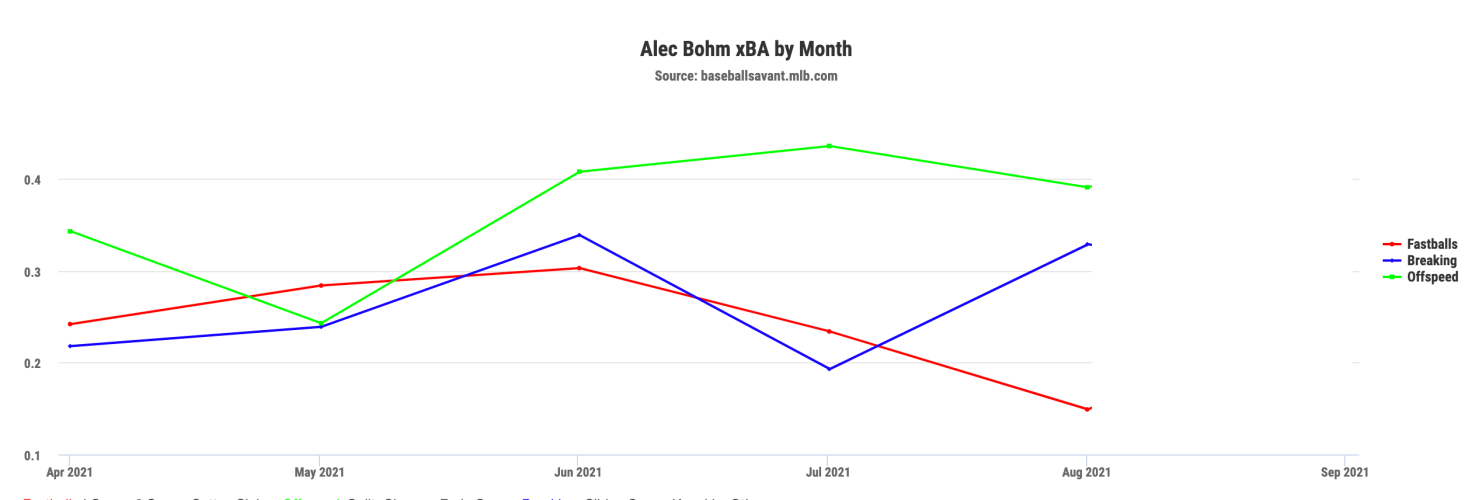
Bohm has some things going for him such as his draft pedigree (8th overall pick) as well as the fact the Phillies system does not have anything to readily replace him. The only thing we have to hang our hat on at the moment is his ability to hit the ball hard, but until he can get some loft to it and show the league he can handle a heavy diet of fastballs, it is understandable why Bohm currently sits on the clearance rack after nearly cracking the top 100 last season.
The Gary Sanchez situation is rather intriguing given there was no guarantee the Yankees were going to offer him arbitration this time around given he has been a below-average run producer over the whole of the last four seasons, and only his 2019 numbers were above league-average. The strikeout rate returned to its normal levels after the ugliness of 2020, and he drove his walk rate up for a third consecutive season, yet not much else went well for him. He still has a lot of swing-and-miss in his game, and his non-throwing skills behind the plate lead him to be lifted later in games and costs him playing time. 2019 is still very recent history, but Sanchez is currently the 16th catcher by positional ADP. If you were previously adverse to rostering his power upside because of the price, this is now the time to buy back in if you want to look for an age-30 rebound season for what is very likely his final season with the Yankees.
Gio Urshela is a different situation because he is actually well-liked by the fanbase as he does not get booed after every strikeout or misplay as does Sanchez. Urshela suffered through a variety of injuries throughout the season that led to him missing nearly 50 games and cutting into the production he has enjoyed since joining the Yankees. So much of what he did last year looks out of place compared to the rest of his Yankee resume yet can easily be attributed to his many injuries throughout the season. Even me, a notorious Yankee loather, would be thrilled with getting a Sanchez/Urshela combo near the turn in the 18th round.
Corey Kluber enjoyed some of a Yankee tax last season as his price was high even though he had thrown fewer than 40 innings combined the previous two seasons. Kluber, a notorious slow starter, did just that early on until a nice lay-up start against Baltimore in late April got him on a run that took him through a no-hitter against Texas on May 19. Predictably, Kluber went down with another injury in his very next outing and missed three months with shoulder woes and did not return until late August. Upon his return, Kluber turned his curveball into his primary weapon as he closed out the year with mixed results.
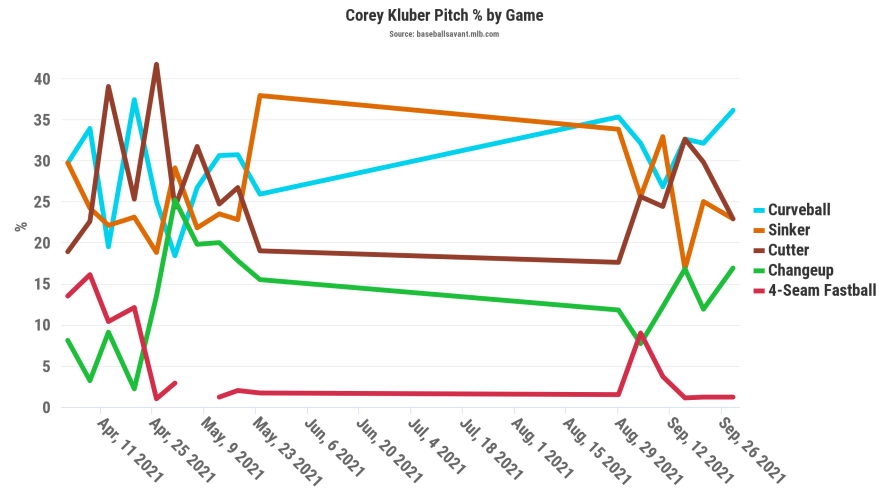
Now he takes his talents to the "Mecca of pitching" and can work with Kyle Snyder on how to continue tweaking things in the sunset of his career. Snyder and crew have a knack of helping pitchers focus on what they do well and minimizing what holds them back. It would not be surprising to see Kluber continue to use his non-fastballs to set up his sinker and lean on the defense behind him as long as his body can hold up. The Tampa Bay track record makes this current Kluber market price extremely attractive.
Triston McKenzie has not fallen that much since last draft season despite the poor performance last year, but the market has cooled on him from the hype just one year ago. He is an interesting speculation as he limited the opposition to a .194 batting average with a 28 percent strikeout rate and had a solid 1.18 WHIP for a pitcher with a near-5.00 ERA because of untimely walks and homers. In fact, McKenzie had the highest ERA of all pitchers last season with the following conditions:
- At least 100 IP
- At least a 25 percent strikeout rate
- Less than .250 batting average against
- WHIP 1.20 or less
Look at the company with McKenzie in the ERA above 4.00 while noticing he was one of just four pitchers to post such an ERA with otherwise strong numbers:
Player | ERA | IP | WHIP | BA | K% |
|---|---|---|---|---|---|
4.95 | 120.0 | 1.183 | 0.194 | 28% | |
4.68 | 119.1 | 1.173 | 0.241 | 26% | |
4.63 | 180.2 | 1.129 | 0.237 | 30% | |
4.22 | 166.1 | 1.094 | 0.222 | 29% | |
3.83 | 138.2 | 1.183 | 0.236 | 26% | |
3.55 | 121.2 | 1.019 | 0.224 | 30% | |
3.55 | 101.1 | 1.184 | 0.186 | 31% | |
3.53 | 178.2 | 1.103 | 0.219 | 28% | |
3.52 | 192.0 | 1.063 | 0.223 | 26% | |
3.48 | 155.1 | 1.178 | 0.232 | 26% | |
3.37 | 187.0 | 1.182 | 0.232 | 27% | |
3.34 | 185.2 | 1.045 | 0.203 | 29% | |
3.23 | 181.1 | 1.059 | 0.223 | 34% | |
3.22 | 111.2 | 1.048 | 0.192 | 28% | |
3.18 | 181.1 | 1.081 | 0.213 | 27% | |
3.18 | 130.1 | 1.09 | 0.207 | 29% | |
3.07 | 102.2 | 1.12 | 0.233 | 28% | |
3.03 | 148.1 | 1.106 | 0.234 | 27% | |
2.96 | 185.2 | 1.018 | 0.219 | 26% | |
2.84 | 193.1 | 1.045 | 0.210 | 32% |
McKenzie still has some growing pains to work out, but should you see him falling in your draft pool in the mid 200's, it is absolutely worth jumping in to see what he has this season.
Garrett Hampson has fallen 3-4 rounds in his value after yet another disappointing showing at the plate. If he played for a contender, Hampson would not see the field nearly as much because of his low offensive ceiling, but he does play for a terrible club which means more playing time, which that is music to fantasy owners' ears. He pulled off a double-double season with career highs in homers and steals while also lowering his strikeout rate to a career-low 24 percent. We haven't even mentioned his speed as he is one of the quickest runners in baseball with a 78 percent career stolen base success rate. The problems for him are centered around huge struggles to hit on the road and issues against right-handed pitchers coming off a career-low .217/.267/.333 batting line against righties in 335 plate appearances. He has never hit righties well, but the .601 OPS last year was by far a career low, so if he can get to just slightly below average against them rather than completely abysmal, it creates more stolen base chances for him to use his speed. His current ADP puts him in the 19th round in 15-team mixed league drafts, so if you find yourself needing speed in the 20th round or later, he is an intriguing candidate to have a roto breakout fueled solely on speed.
Hector Neris put Philly in the rearview mirror and took his talents to Houston. Neris ended his career in the City of Relieverly Hate with a 22.0 K-BB% while limiting opponents to a .218 average with a 3.42 ERA and 1.19 WHIP in eight seasons. He twice led the club in saves, but was just 17 for 27 in saves the last two seasons, with homers being an issue he has never really shook. He has allowed at least nine homers in each of the last five full seasons of play with his fastball/splitter approach to hitters. He still owns quite an intriguing StatCast profile page, which makes him an interesting reserve spec play, particularly if you have Ryan Pressly on your roster:
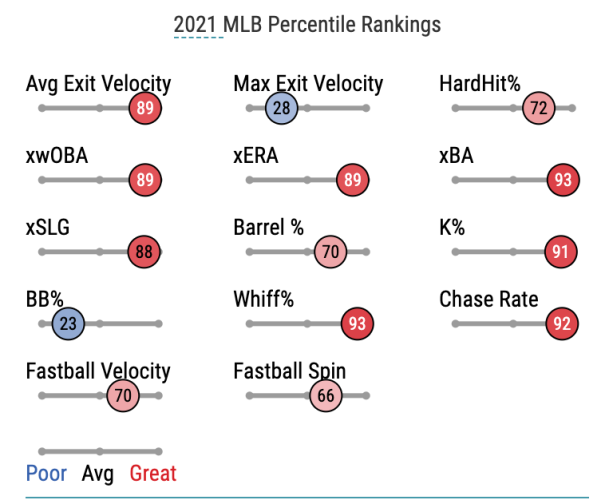
The league hit .137 off his nasty splitter with a 45 percent whiff rate and even his four-seamer had a .196 xBA (.244 actual) with a 33 percent whiff rate. Simply put, Neris has the stuff to thrive in late innings and now he can go work under Dusty Baker who has shown a penchant for his veterans allowing them a longer leash than younger pitchers. Neris may not get as many saves, but he should be in line for win vultures with plenty of strikeouts and possible ratio rebounds in play as well.
Due to the incomplete nature of this disrupted offseason, it is tough to forecast rookies who may be blocked by playing time because there is simply too much roster movement to be done once the owners decide to end the lockout. However, we do have many players who have seen their draft stock fall since last offseason. In studying the list of players whose ADP has dropped by 100 or more points since last season and are currently being drafted outside the regular rounds of a standard 15 team mixed league (post pick 345), some interesting names show up.
James Karinchak (ADP 105 in 2021) was going just outside the top 100 last season, yet finds himself at 377 this winter. He was indeed a wild thing last year and struggled with both command and control, leading to another season of too many walks but with the added pain of too many homers, and quickly gave way to Emmanuel Clase as the closer. Karinchak maintains his strong abilities to miss bats and would be incredibly dangerous should he find a way to stop giving away free trips on the bases. He is a skill away from being a potential elite reliever.
Manuel Margot (ADP 250 in 2021) currently is just inside the top 400 at 384 with ADP. Margot has double-digit steals in each of the last five seasons, and one would expect that to continue as his defense and right-handedness guarantee him playing time in one form or another in the Tampa Bay climate. A potential trade of Kevin Kiermaier only helps open up playing time for Margot until the service time needs of Josh Lowe are properly addressed assuming the CBA does not change how that system works. Margot is a strong late speed play in the reserve rounds whereas he was being taken so much earlier last year. His ADP plunge, despite a productive year, is rather puzzling.
Finally, Rougned Odor (ADP 466) landing in Baltimore intrigues me. His ADP is now 566, but he now has one very important thing going for him: he is in Baltimore. Playing for the perpetually rebuilding club allows him as much playing time as his bat allows, and he gets half his games in a wonderful home park for lefties along with road games in other friendly parks within the division for lefties. We are talking about a final round reserve pick, but this could be a productive volume play with his ability to still punish a mistake and the favorable home park. I mean, this is a club with gave Maikel Franco 403 plate appearances last season.
Happy hunting!







